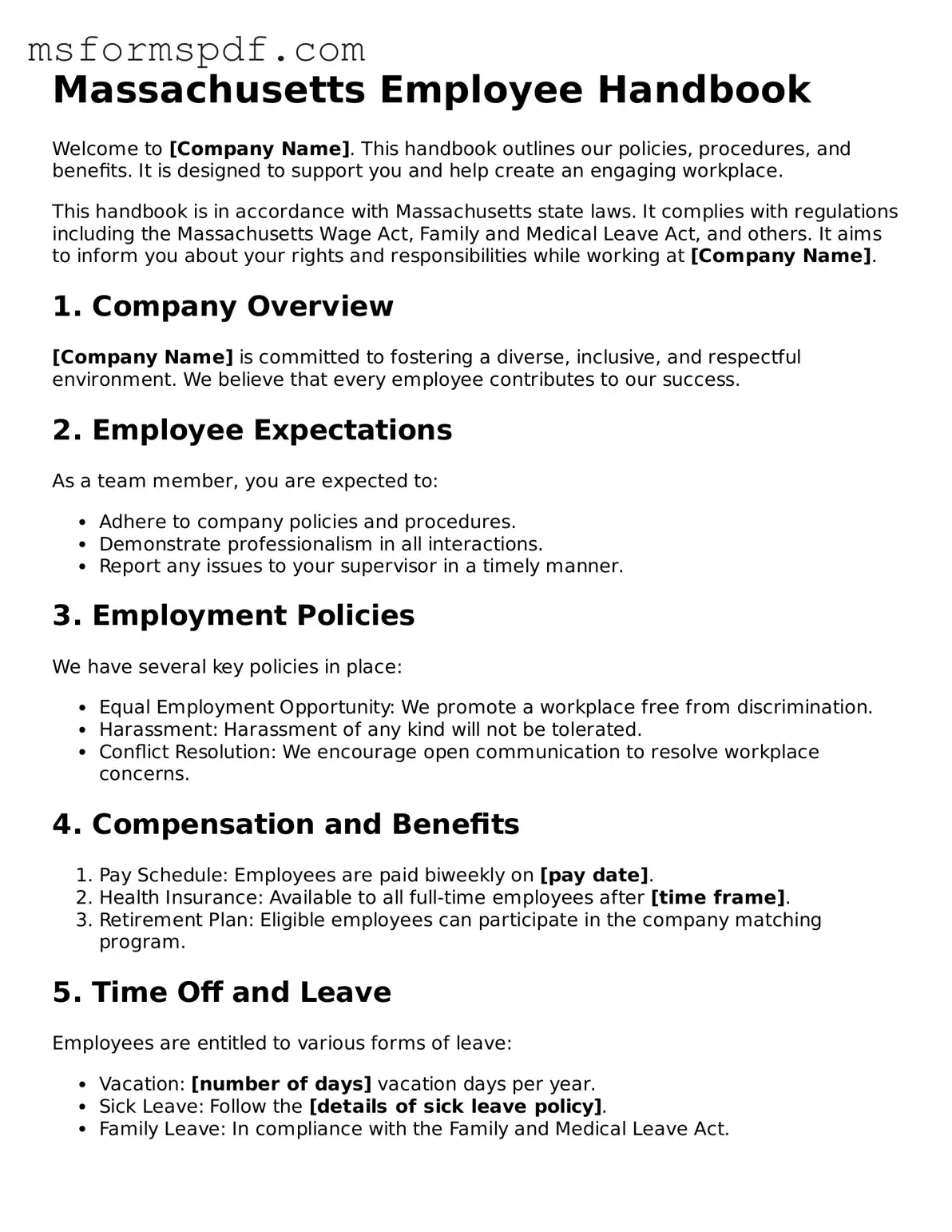Blank Massachusetts Employee Handbook Document
The Massachusetts Employee Handbook form serves as a vital document for employers, outlining workplace policies, employee rights, and company expectations. This form not only helps ensure compliance with state laws but also fosters a clear understanding between employers and employees. By providing essential information, it promotes a positive work environment and sets the foundation for successful employer-employee relationships.
Launch Editor Now
